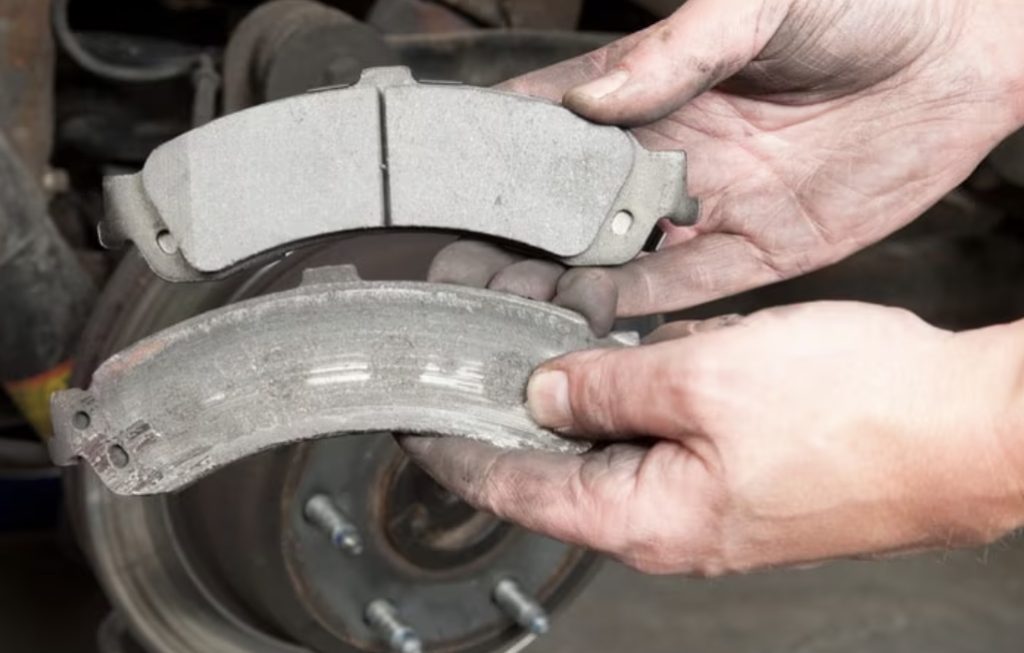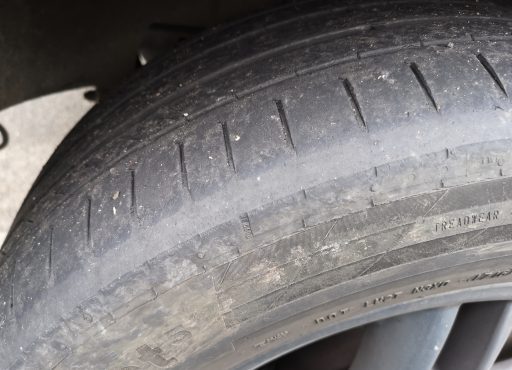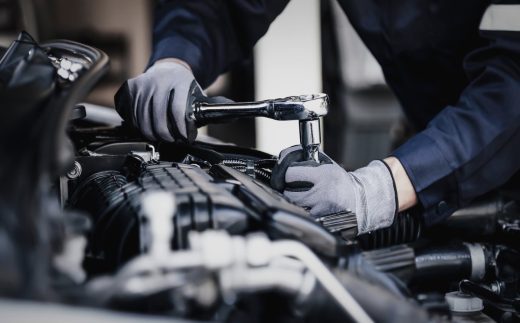Family cars, regardless of make or model, are susceptible to a variety of maintenance issues. Family cars have many uses, like transporting kids and carrying heavy things. However, wear and tear can differ depending on how the car is used and taken care of. Nevertheless, here are a few points to take note of if own a family car and wish to encounter fewer road bumps along the way.
Oil Leaks

Oil leaks are a common cause of car problems. They usually happen when the seals and gaskets in the engine become damaged or worn out over time. While these leaks may start small, they can escalate into significant issues if overlooked. The absence of necessary lubrication can lead to
a.) Engine damage: When the engine may not receive adequate lubrication, this results in increased friction and wear on critical components. Over time, this can lead to engine damage, decreased performance, and even engine failure.
b.) Overheating: Oil helps in dissipating heat generated by the engine. If there is an oil leak, the oil level may drop, reducing its ability to cool the engine.
c.) Reduced fuel efficiency: This increased strain can lead to decreased fuel efficiency, as the engine becomes less efficient in converting fuel into power.
d.) Increased maintenance costs: it can cause additional damage to other engine components, leading to more extensive and expensive repairs.
Brake Wear and Tear

The frequent use of family cars can accelerate brake wear and tear. Brake problems like thinning pads or warped rotors can make braking less effective and increase the time it takes to stop, which can be a serious concern. Because family cars tend to carry a heavier load, this may place a higher burden on the brakes each time it is used.
The brake system, a critical safety feature in any car, is not immune to the ravages of time and use. Family cars, often subject to heavy use, are particularly prone to brake wear and tear. The friction generated between the brake pads and rotors when you apply the brakes gradually wears down these components.
Tell-tale signs of brake wear include a squealing or grinding noise when braking, a pulsating brake pedal, diminished braking efficiency, or the illumination of the brake warning light on your dashboard. It’s crucial to address these symptoms promptly to prevent more serious issues like rotor damage, brake failure, or even accidents.
Ideally, a brake check should be part of every oil change routine, looking for signs of worn brake pads, low brake fluid, or damaged brake lines. If you notice any warning signs, don’t delay in getting your brakes serviced. Gentle braking habits and keeping your brake fluid at the right level can also help extend the life of your brakes. Remember, when it comes to brake wear and tear, prevention is better than cure.
Battery Problems
The battery is the heart of your car, powering everything from the engine’s ignition to the vehicle’s electrical systems. However, it’s not uncommon for family cars to encounter battery issues. If your car struggles to start, or if you notice a slow crank when turning the ignition, dimming lights, or a lit battery warning light on your dashboard, these could be signs of a looming battery problem.

Most car batteries need replacing every three to five years, but extreme temperatures or frequent short trips can shorten this lifespan. Symptoms of battery problems include corrosion around the battery terminals and a decreased ability to hold a charge. In this modern day of technology, we are beginning to see many family cars fitted out with extra aftermarket electronics such as DVD units, inbuilt fridges and so on. With all these additions, the car battery will wear out faster than your typical car.
Proactive battery maintenance can help prolong its life. Regular cleaning of battery terminals to prevent corrosion, ensuring the battery is securely fastened in its compartment, monitoring battery fluid levels, and having your battery professionally inspected at least annually are all good practices. In case of battery failure, you may be able to recharge it, or it might need replacement. Keeping a set of jumper cables in your car is a smart precaution until you can get the battery professionally serviced. Remember, while battery issues can be a nuisance, they are largely preventable with mindful car usage and regular maintenance.
Tyre Wear
Uneven tyre wear can make it harder to control the car and cause more fuel to be used. Factors such as incorrect inflation, misalignment, and aggressive driving can exacerbate tyre wear. Regular tyre rotations, alignments, and maintaining the correct tire pressure can help manage these issues.

The frequency and severity of these maintenance issues can largely depend on how the car is used and maintained. Similarly, to our previous point on brake wear and tear, the tyres too would be exposed to a similar dilemma, as they are put under larger pressure due to heavier weight loads/ additional passengers.
Indicators of tyre wear are not always immediately obvious. They can manifest as reduced performance, especially in wet conditions, visible tread wear, cracks in the tire sidewall, and increased road noise. Your car’s tyre pressure monitoring system, if equipped, may also alert you to potential issues.
To maintain your tyres, it’s recommended to check the tire pressure monthly and ensure it aligns with the manufacturer’s suggested PSI (Pounds per Square Inch). Regular wheel alignment and tyre balancing and rotation are also crucial, following the guidelines provided by the tyre manufacturer or your vehicle’s manual.
Maintaining Your Family Car – Getting extra miles
The key to ensuring the optimal performance, longevity, and value of your cherished family car lies in diligent maintenance. This holds true regardless of the make or model of your SUV, van, ute and so on. In this section, we will explore the fundamental aspects of car maintenance, which include adhering to regular service schedules, practising proper driving habits, and promptly addressing any warning signs. Grasping these elements not only minimises the likelihood of common car issues but also enhances safety and enriches the overall driving experience.

Regularly Scheduled Maintenance
The health and performance of your car, irrespective of its brand or model, heavily depend on regular maintenance. This involves routine checks, services, and part replacements as suggested by the manufacturer—details of which can be found in your vehicle’s owner manual.

In short, adhering to a regular maintenance schedule is an effective strategy to prevent minor issues from turning into costly repairs, while also ensuring your vehicle remains safe and reliable for your family. More often in Australia, cars are expected to have their minor service every 10,000 km travelled or roughly bi-annually every 6 months. Always do check your logbook and car manual for instructions on when your major service may be due. Your car is not always about looking great from the outside via car detail, but more importantly from underneath the hood.
Proper Driving Habits
The longevity and overall health of your family car are significantly influenced by your driving habits. By adopting a few simple practices, you can help stave off common issues and prolong the life of your car.
For instance, try to avoid sudden acceleration and abrupt braking, drive like a race car driver, and you will encounter wear and tear faster than you can say help. These actions can put undue stress on your car’s engine, transmission, and braking system, leading to premature wear and tear.
Driving on low fuel is another practice to avoid. If you are one of those who commonly drive with the low fuel warning light is on, this is for you. This can cause debris from the bottom of the tank to be drawn into the fuel system, potentially clogging the fuel filter and damaging the fuel pump.

In colder climates, allow your car to warm up before driving. Cold temperatures can reduce the effectiveness of your car’s lubricants until they warm up. By driving gently until the car reaches its normal operating temperature, you can prevent unnecessary strain on the engine. Just like how our bodies need to be warmed up and stretched before exercise to reduce strain and injury, the same applies to your family car.
Lastly, regular washing and waxing can help preserve your vehicle’s exterior and interior components. Over time, accumulated dirt, salt, and other substances can cause the paint to deteriorate and lead to rust. Your car is often an extension of your home and keeping it cleaned and well-looked after can really take it beyond its miles. Occasionally get your car detailed in addition to regular car washes to maintain hygiene and cleanliness.
In essence, adopting proper driving habits can significantly contribute to the longevity and overall health of your family car. These habits can reduce the frequency of repairs, enhance safety, and improve the overall driving experience.
Immediate Attention to Warning Signs
Attending to your car’s warning signs promptly is vital in preventing minor issues from escalating into major problems. These signs can manifest in various ways – unusual noises or smells, warning lights, changes in handling, or even a decrease in fuel efficiency. Never ignore the warning signs and delay to your own discretion.
Never disregard illuminated warning lights on your dashboard. Each light represents a different potential issue, ranging from a simple tyre pressure warning to a serious engine or transmission problem.
If your car starts to handle differently, such as pulling to one side when driving straight or vibrating under certain conditions, it’s a clear sign that it needs attention.
A decrease in fuel efficiency can also indicate underlying problems. Issues like a clogged air filter or a failing oxygen sensor can affect fuel economy. Addressing these promptly can prevent further engine damage and maintain your vehicle’s performance.
In summary, our car care experts recommend promptly addressing warning signs is a proactive approach to maintaining your family car. By responding quickly, you can minimise damage, save on potentially expensive repairs, and most importantly, ensure the safety of your car for you and your family. Don’t let these common issues eat up your next family road trip and constantly pay attention to your car’s needs. More passengers generally mean extra weight, pressure and therefore strain on certain areas of the car as we discussed.

Car Care Advice For The Everyday Driver & Enthusiast
With a relentless hunger to deliver car owners and drivers across the world with the latest emerging trends and innovations in the car space, you have tuned into the right place.
The post Common maintenance concerns with family cars appeared first on Schmicko Mobile Auto Care & Installations.
